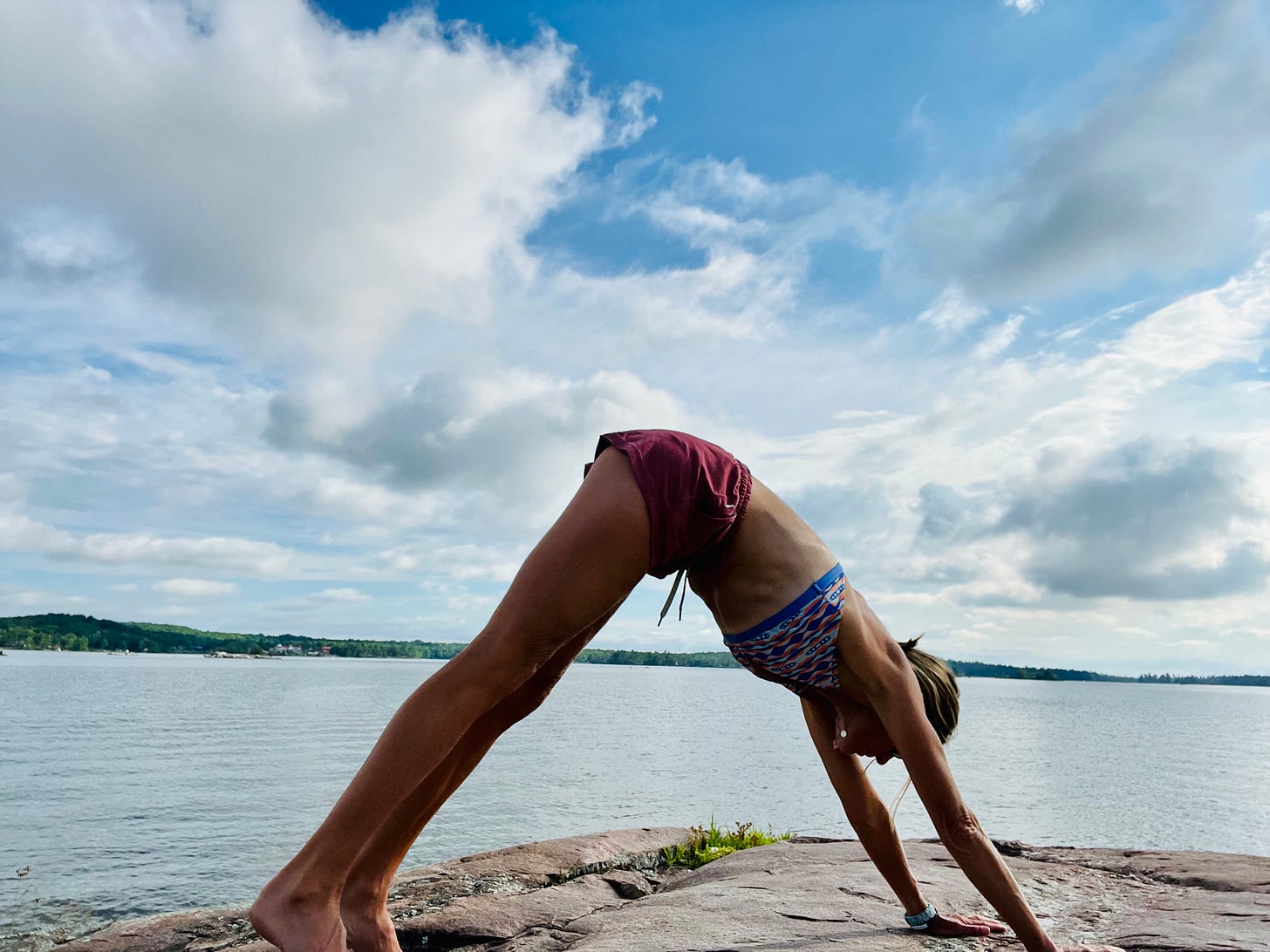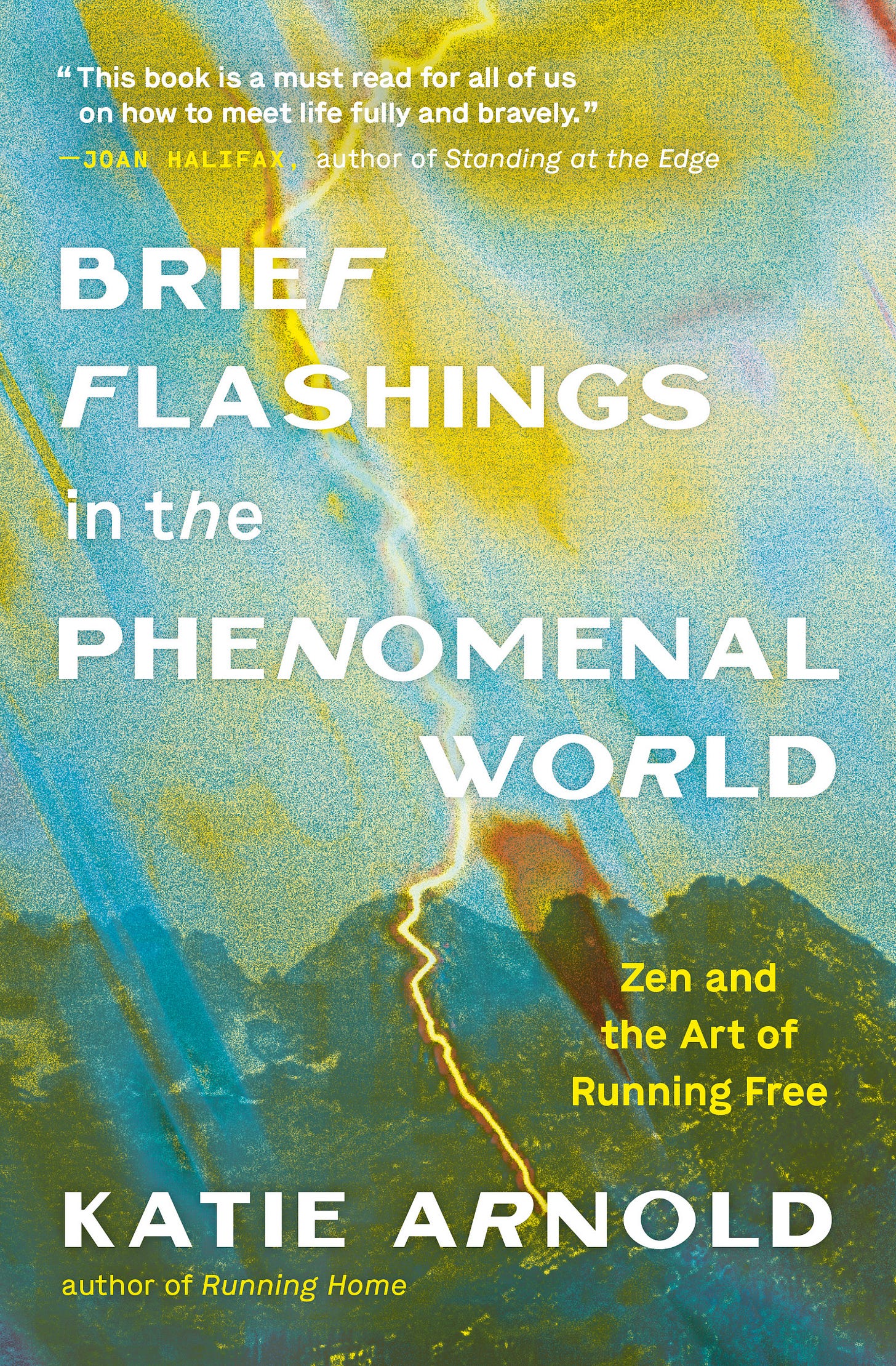Hello from our cottage on Stony Lake, Ontario. What a week it’s been. Wherever you are and whatever you’re doing, this is a good moment to stop and take a long, deep breath. Come back to your center.
In almost every art form, spiritual tradition, and scientific law, the center is a powerful expression of balance, equanimity, and stability. But it’s not just a symbol of these qualities; it’s also a method for cultivating them in ourselves and in the world.
In tai chi, your center line is the axis along which your whole body aligns. When you move from your center—balanced equally left to right, forward and back, up and down—your energy flows naturally, without obstructions. Your mind, too, becomes clearer, free from distractions. This is our natural state of infinite power and awareness.
When I practice tai chi in the park with my teacher, Jeff, I sway a little left to right until I find it—that palpable, invisible meridian—and feel my whole body elongate and orient around my center, from my feet to the crown of my head. It’s like I’ve grown taller, sturdier, and at the same time, more fluid. Imagine your center like a needle wrapped in cotton, Jeff sometimes says, and I can see it in my mind’s eye, a soft but strong spine that holds me up and gathers my power so I can release it through my body.
Zen Buddhism is known as “the middle way”—a place of non duality, non-separation, and interconnection. When we practice the middle way, we let go of preferences and positions and instead open to the truth of the way things really are, without judgment, open to all possibilities. The late Zen master Shunryu Suzuki defined nirvana as “seeing one thing completely through to the end.” You don’t panic when it gets hard; you keep calm and carry on for as long as you need to.
I used to think that the middle was boring, passive, static. As a competitive runner, I wanted the high highs (without the lows). I wanted to train myself to the knife edge of endurance. I pictured peak fitness like the top of a cartoonish triangular mountain, with a tiny point on top, a Seussian summit swarming with strange creatures. The apex was so minuscule there was only ever room for one person to wobble precariously on one toe on the apex. The stakes were so high, and it was a long way to fall.
Fortunately it doesn’t have to work that way. When we change our mindset to one that’s more grounded, open, and generous, we see that physical and mental strength is continuum. There’s not one tippy-tippy-top, not a single glory summit; rather, we keep going, flowing up and down the ridges, into the saddles between the peaks. There will be low points, steep clambers up to the summit ridge, stormy days, times when our bodies feel like crap. The middle is where we learn to trust our strength and commitment to staying the course, no matter what difficulties we face, regardless of outcome.
The other day, during a book talk for Brief Flashings in the Phenomenal World, a friend I’ve known since adolescence asked me how I stayed on a river for six days with a broken leg. Did I possess a quality other people don’t (besides a ridiculous pain threshold)? I explained that I’d learned when I was young how to stay with hard things; ultramarathons and childbirth had taught me this, too. Afterwards, I realized what I meant to say is that every person is stronger than they think. Each one of us has the ability to withstand grueling circumstances without giving up.
This is not a rare gift that separates the strong from the weak, it’s a shared trait that connects us all as humans.
Here at Stony, my daughters sail everyday. They go out even when it’s raining, in thet tail end of a hurricane wending north from Texas to Ontario. The other day the wind was up, and P came home, sounding excited. She’d started the month sailing with her head, she said, but she'd finally broken through and was sailing in her body. “And I finally understand CLT and CE!” she exclaimed. She her hand dismissively like these were everyday abbreviations for something so obvious they required no explanation.
I nodded, pretending I knew what she was talking about. The terms wobbled in my memory like islands emerging from a thick fog. I'd learned them once, too, when I was her age and struggling with sailing theory. Then I held up my hand, like Whoa?
P sighed. “CE is center of effort. It’s the center point where the force of the wind is pushing on the sail. CLT is center of lateral resistance, the center of the force on the places that drag in the water.” Patiently, she got out a piece of paper and drew me a diagram. When the boat is heeling and the two point, on the sail and centerboard, s are misaligned, they push against each other, slowing the boat and impeding forward motion, rather than allowing it to slice cleanly through the water. “A flat boat is a fast boat,” she said.
The terms, while technical, had a magical ring. They suddenly made sense to me in a way they hadn’t before. They sounded Zen, like tai chi, like writing and running, like life—when your whole self is immersed in an activity, the separation between you and it dissolves. There's no resistance. You’re in the center of effort. In flow.
Before I got to the lake, I spent six days riding my gravel bike around central Vermont. I biked up and over mountain passes—which in the Green Mountains are called “gaps”—in the rain and heat. I purposefully I did not plan ahead. I rode hard, trusting I’d figure things out as I went. I did. I ate a pint of just-picked strawberries straight out of my bike bag. I met and talked to people everywhere I went. On the last night, I walked into an inn and asked if they had any rooms. A jazz trio was playing in the parlor. I got the last room. When you’re in the center of effort, it feels almost effortless.
Now I'm here, getting ready for the 100-mile Leadville mountain bike race and working on my next book, a novel. My stamina for riding is making me stronger for writing, and vice versa. I’m in the middle of both—the biking and writing in balance, exerting equal force, gathering energy for the efforts ahead.
The way forward be difficult at times, even in the middle, maybe especially there. But if we can live in the center of effort, on surer footing within ourselves and with more compassion and composure for others, we’ll be better able to weather the headwinds ahead and find our way through the fog.
breathe, xo
katie








